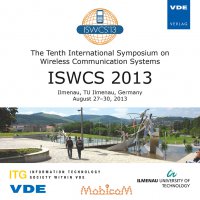End-to-end Delay in Mobile Networks: Does the Traffic Pattern Matter?
Conference: ISWCS 2013 - The Tenth International Symposium on Wireless Communication Systems
08/27/2013 - 08/30/2013 at Ilmenau, Deutschland
Proceedings: ISWCS 2013
Pages: 5Language: englishTyp: PDF
Personal VDE Members are entitled to a 10% discount on this title
Authors:
Laner, Markus; Fabini, Joachim; Svoboda, Philipp; Rupp, Markus (Vienna University of Technology, Austria)
Abstract:
Modern mobile communication networks react intelligently on user traffic in order to efficiently manage the scarce link bandwidth; for example, by offering high demand users high speed links.Reactiveness bears a central implication for active measurements, namely, the injected probing traffic defines the experienced network performance or, conversely, the obtained measurement results reflect the probing pattern. High precision end-to-end latency measurements therefore require the specification of the traffic pattern for reproducibility. This leads to a basic question: How accurate do these traffic patterns need to be modeled, in order to enable reproducible measurement results? To answer it, we perform active latency measurements in a public 3G HSPA network by employing various traffic patterns. We find that both packet size and packet inter-arrival time strongly affect the latency. Further, the respective history appears to have an influence and, finally, also correlations between both variables change the delay response of the network. This study motivates the deployment of highly sophisticated traffic models in the context of latency measurements, since any generalization of measurement results to arbitrary traffic patterns is shown to be questionable.


